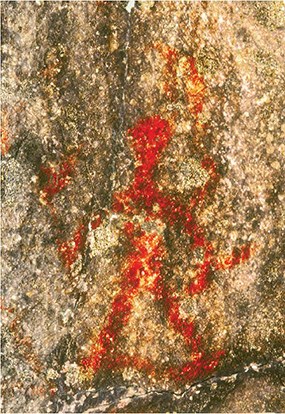
"In a rock shelter on a dark night, the flames cast long shadows on the walls. Wood smoke swirls slightly in the soft night breeze, wreathing freshly painted human figures and animals on the wall in flickers and shadows. Only a few people are around the fire, listening to the shaman's chant. He beats a drum as he recites age-old tales of humans and whales, of people and animals. The listeners feel the power; painted figures on the rock face seem to come alive and move with the excitement and danger of the hunt. They spring to their feet, leap and dance, arms and legs outstretched, as the shaman enters a trance and invokes supernatural powers . . ." Read This Book

NPS photo / J. Henderson Summary Where We Found a Whale is a lavishly illustrated account of thousands of years of hitherto obscure Alaskan history, which places one of America's great national parks in a wider historical context. It tells the story of the diverse human groups who have settled around Lake Clark, in an area that became a frontier between Alutiiq maritime peoples and Dena'ina hunter-gathers. The story begins with first human settlement many thousands of years ago, followed by appearance of early inland and maritime peoples around the outer Cook Inlet, and describes their increasingly sophisticated adaptations to a rich, but demanding environment. We learn how the Lake Clark region was a constantly shifting frontier between Alutiiq and Dena'ina groups, also of ancient whaling practices, and of the dramatic impact of European exploration and colonization on the region. Much of the story focuses on two unique, yet little known, sites in the park where whaling skippers painted vivid depictions of their hunts many centuries ago: Tuxedni rock shelter and Clam Cove cave. Publication Details Author: Brian Fagan |
Last updated: December 14, 2017
